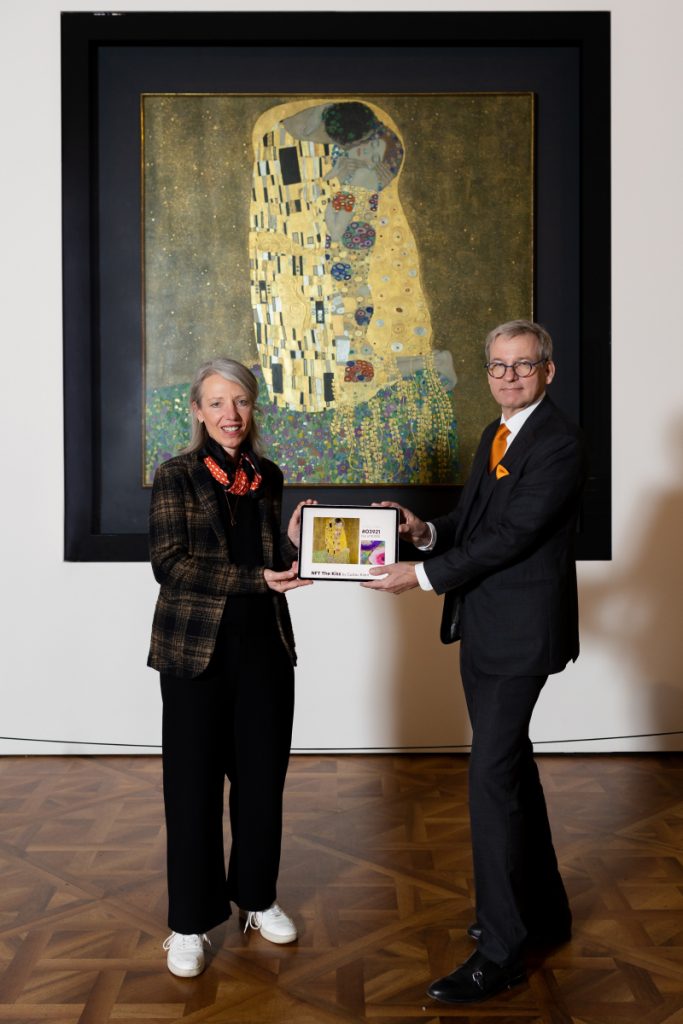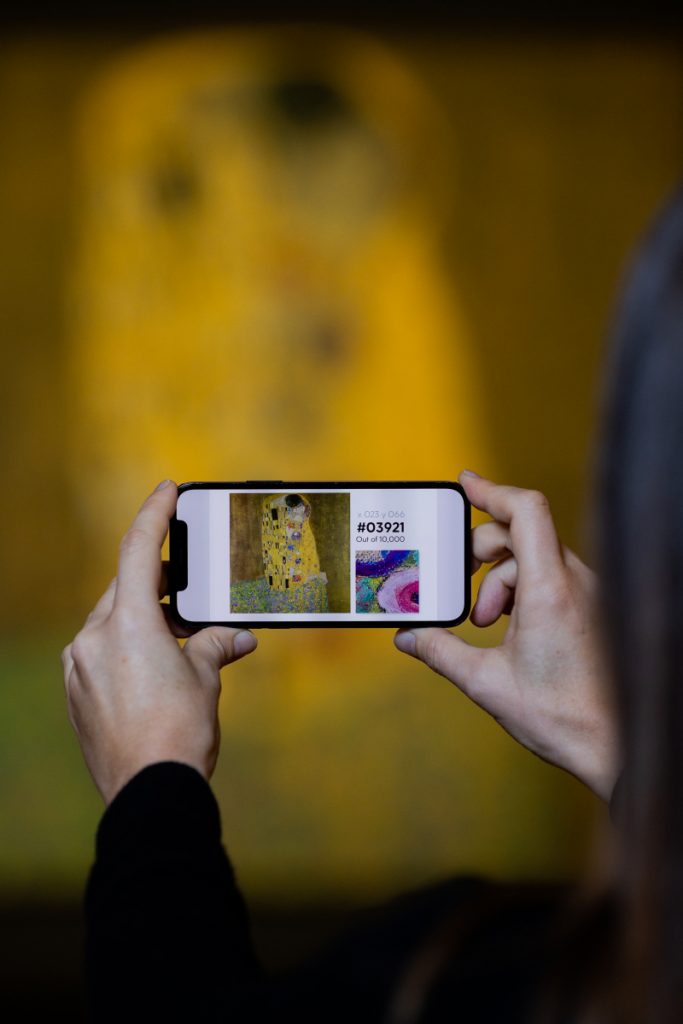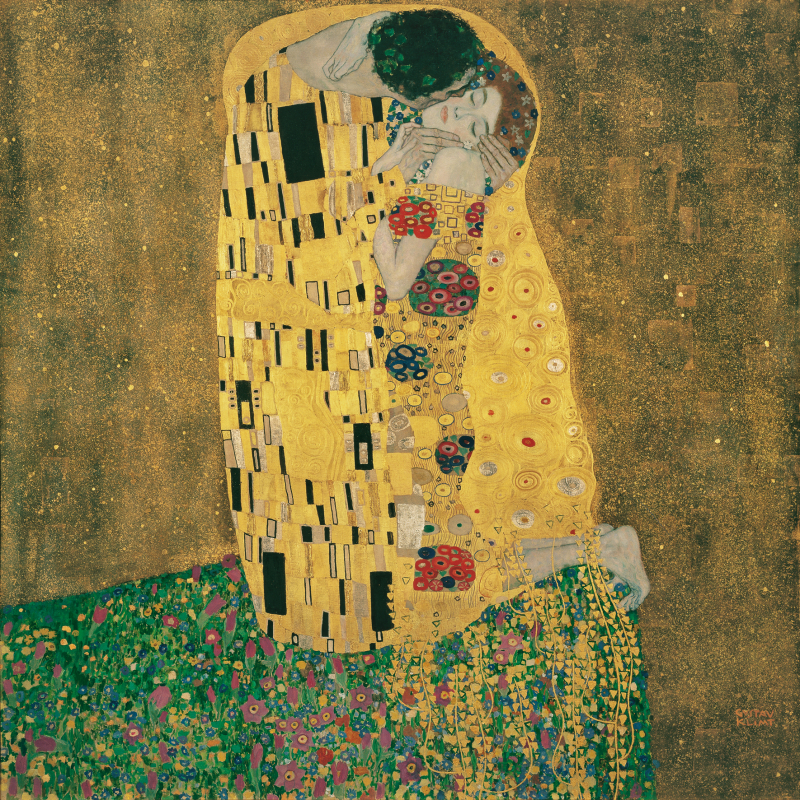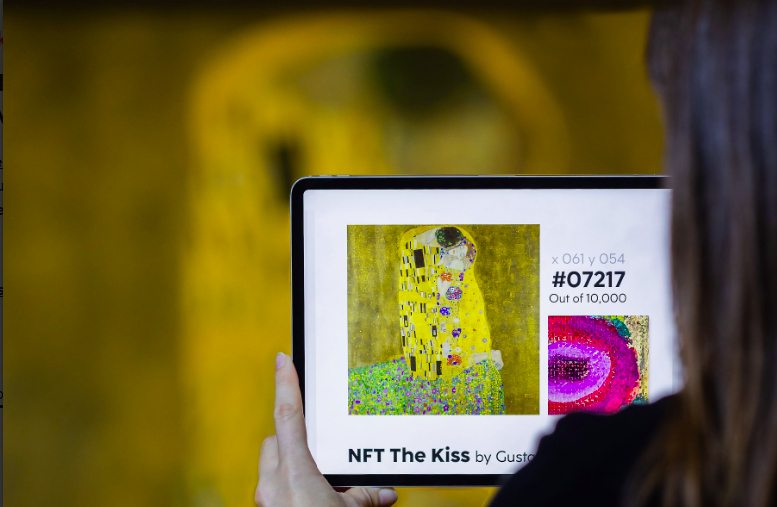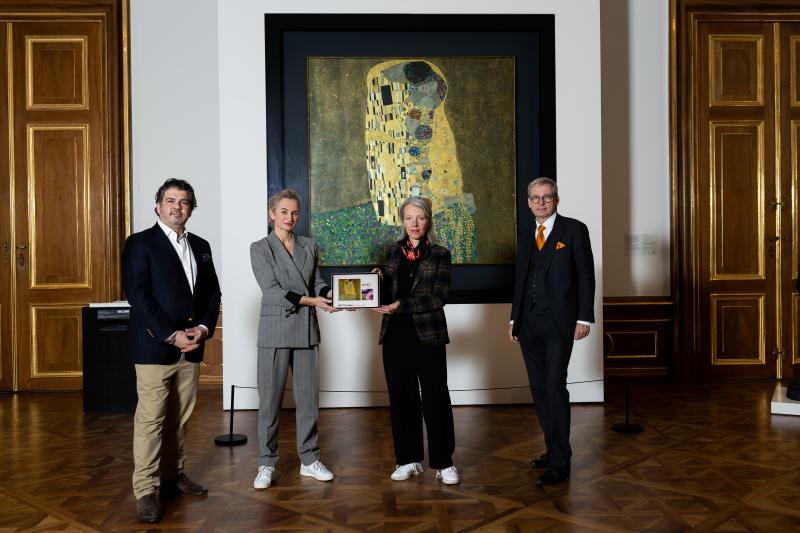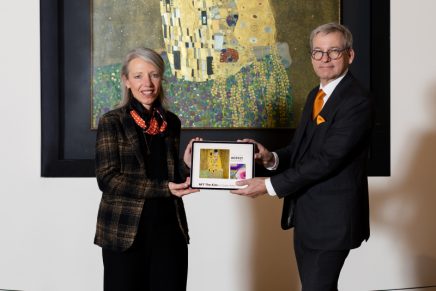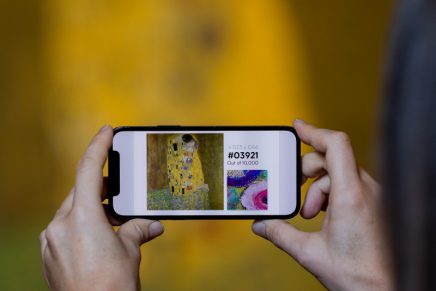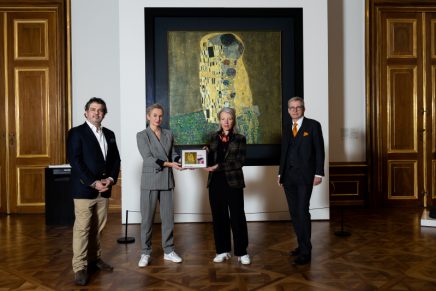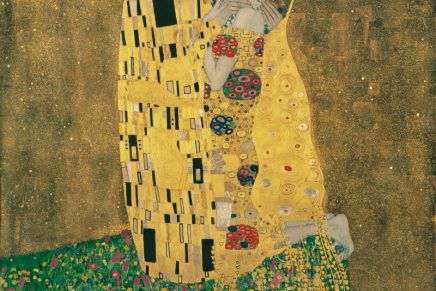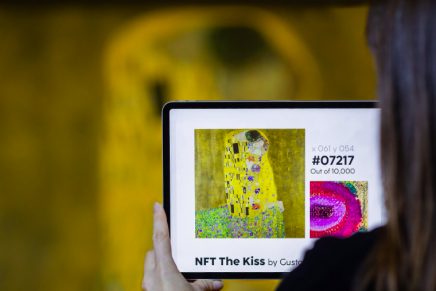The Belvedere Museum in Vienna, one of the leading museums worldwide, Sells NFTs of The Kiss by Gustav Klimt for Valentine’s Day NFTs of “The Kiss“ by Gustav Klimt now available for Valentine’s Day.
In collaboration with NFT investment fund artèQ, the Belvedere museum in Vienna is launching an NFT drop of a historical masterpiece. Just in time for Valentine’s Day, the most famous depiction of a pair of lovers is offered for sale in a limited number of digital excerpts.
Gustav Klimt’s The Kiss (Lovers) – one of the world’s most famous works of art and the centerpiece of the Belvedere’s collection – was specially implemented as an NFT project. A high-resolution digital copy was divided into a 100 x 100 grid, resulting in 10,000 inimitable individual pieces that are offered as non-fungible tokens, or NFTs.
The buying process began with a “whitelisting” phase on 26 January,, when interested parties could register to purchase on the thekiss.art platform. On February 9, buyers will receive authorization to purchase minted NFTs of a piece of the digital Kiss. Minting is an imprinting process through which digital art becomes part of the blockchain – this guarantees that each NFT is unalterable and forgery-proof. From February 9, buyers can complete the transaction. The 10,000 segments of the work will be allocated at random. If the sale is oversubscribed, allocation of the 10,000 NFTs will be decided by lottery. The drop, or official release of the NFTs, will take place on Valentine’s Day, February 14.
In addition to purchasing the NFT, buyers can register as owners of their piece on the platform thekiss.art, where the picture can be viewed in its entirety. This entry can also serve as a declaration of love – just in time for Valentine’s Day.
“What does it mean to own a work of art in the digital age? The rise of NFTs, which has preoccupied the art world since 2020, has given fresh impetus this intriguing question. The conversion of digital reproductions into virtual originals opens up new forms of participation that, in financial terms, should be taken seriously, yet can also be viewed playfully,” says Belvedere General Director Stella Rollig about the drop.
Love declarations aside, the Belvedere expects a high level of interest from NFT collectors:
“The very small number of shares for the world market and the fact that each piece is unique is what makes these tokens so valuable,” says Wolfgang Bergmann, Managing Director of the Belvedere. Farbod Sadeghian, founder of artèQ, added: “We are proud that artèQ’s innovative technology and concept was chosen for the implementation of this globally unique project and that we were allowed to become a partner of the project.”
The 10,000 NFTs can be purchased at an estimated retail price of around 1,850 euros each. A Minting is an imprinting process through which digital art becomes part of the blockchain – this guarantees that each NFT is unalterable and forgery-proof. From February 9, buyers can complete the transaction. The 10,000 segments of the work will be allocated at random. The drop, or official release of the NFTs, will take place by Valentine’s Day, February 14. The issued NFT certificates will then show exactly which digital part of the painting was purchased. An individual dedication of love can be added to the NFT via thekiss.art. These dedications can be seen on the platform starting February 14.
The NFTs can be resold via any commercially available NFT sales platform. A team of art law experts at CMS Reich-Rohrwig Hainz, headed by partner Bernhard Hainz and attorney Saskia Leopold, and attorney Klaus Pateter, who specializes in blockchain and tokenization, are advising the prestigious Belvedere Museum in all legal matters associated with this project. Unzer is a partner in payment processing.
The Belvedere in Vienna is one of the leading art museums. Its famous art collection includes works ranging from the Middle Ages to the present day. Austrian art in an international context is presented in three locations. Highlights include the world’s largest collection of Gustav Klimt paintings as well as prominent works from the periods of Viennese Biedermeier, Austrian Baroque, Vienna around 1900, and French Impressionism. The institution’s central tasks focus on exhibiting, researching, collecting, communicating, and preserving. Ongoing advancements and digitalization in all areas ensures the Belvedere’s significance as an outstanding museum of the future.

